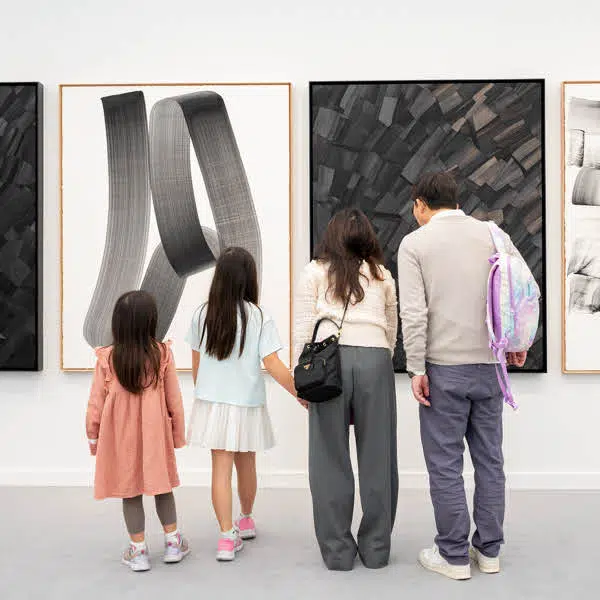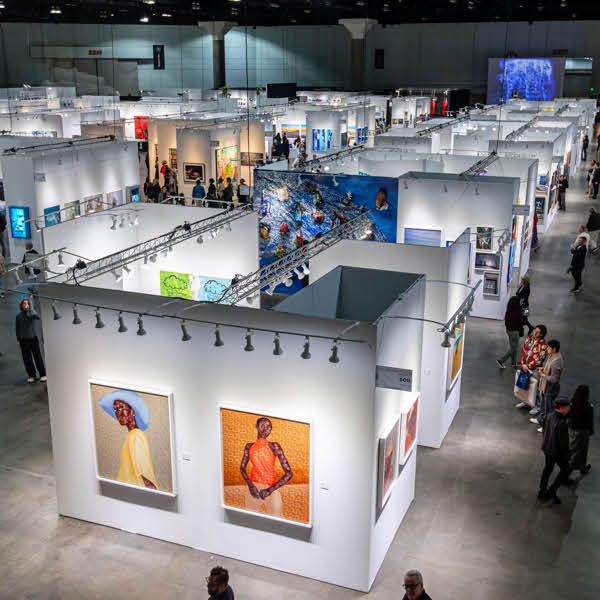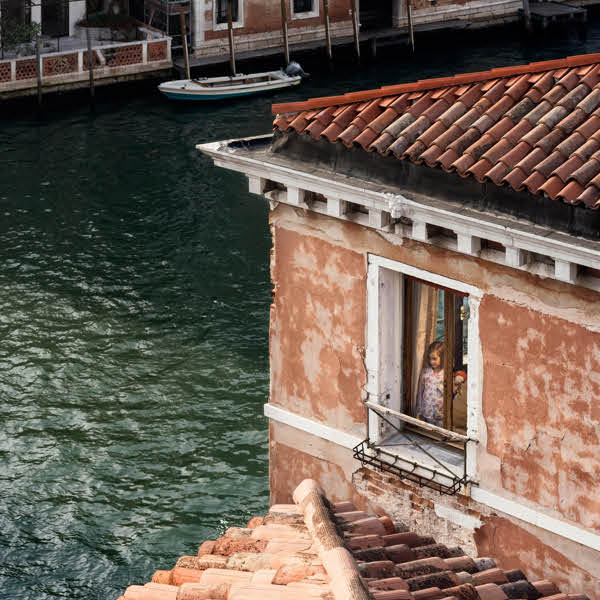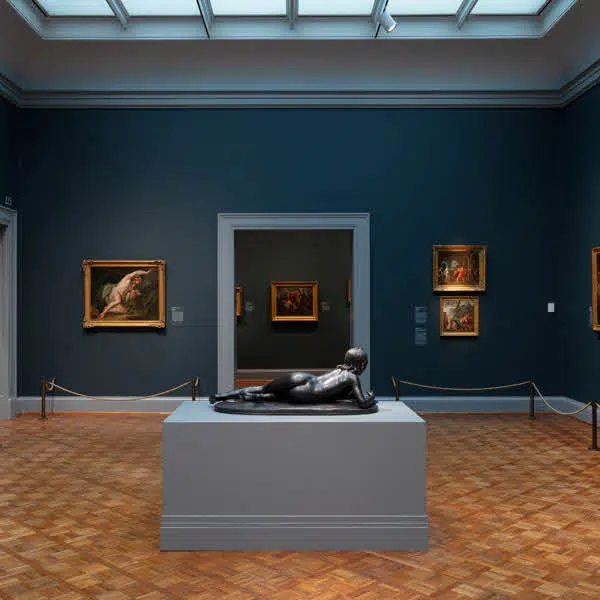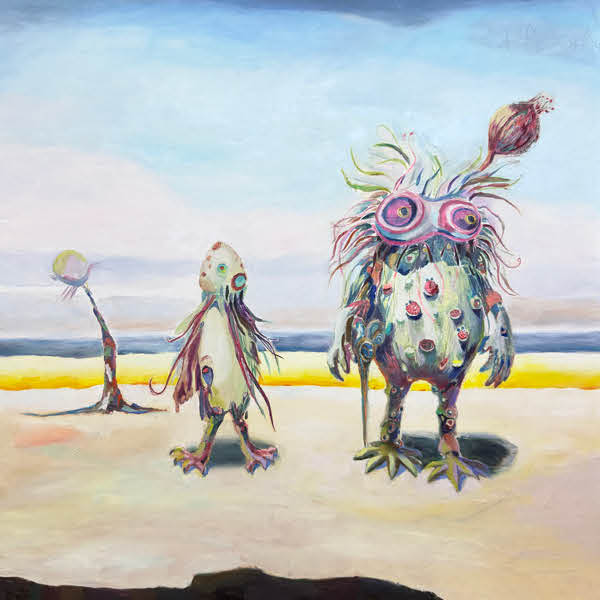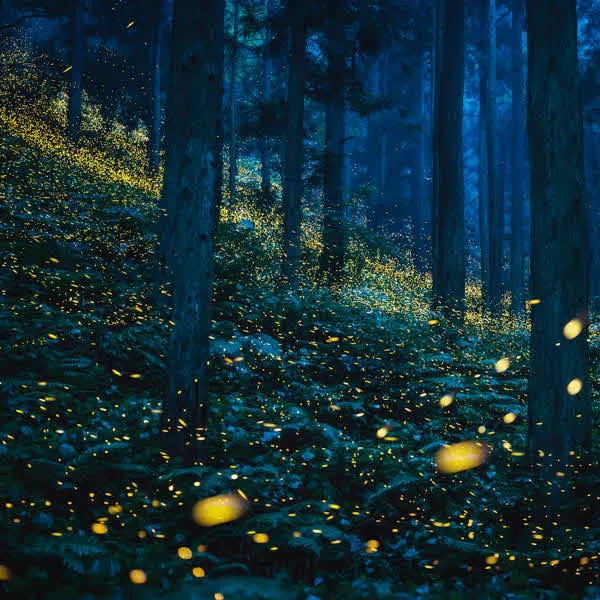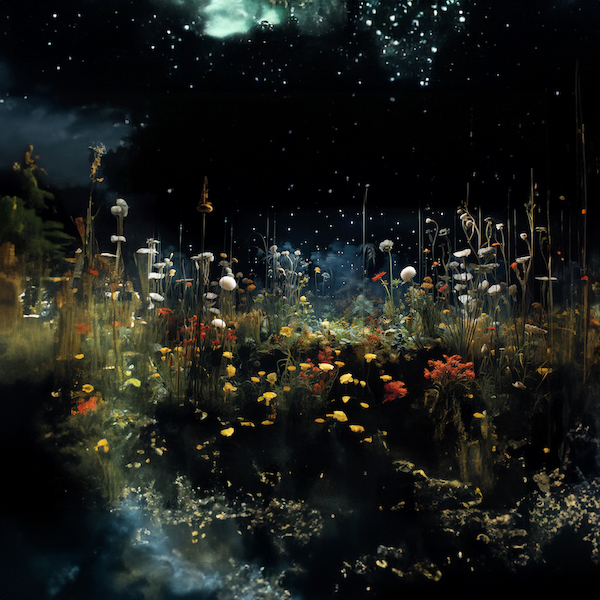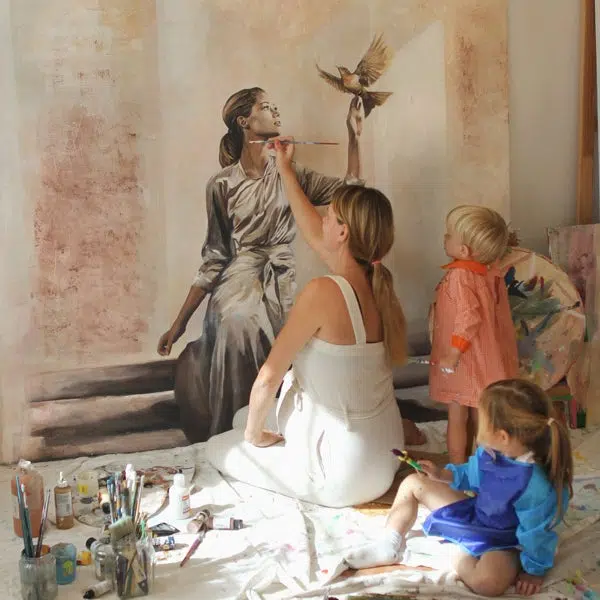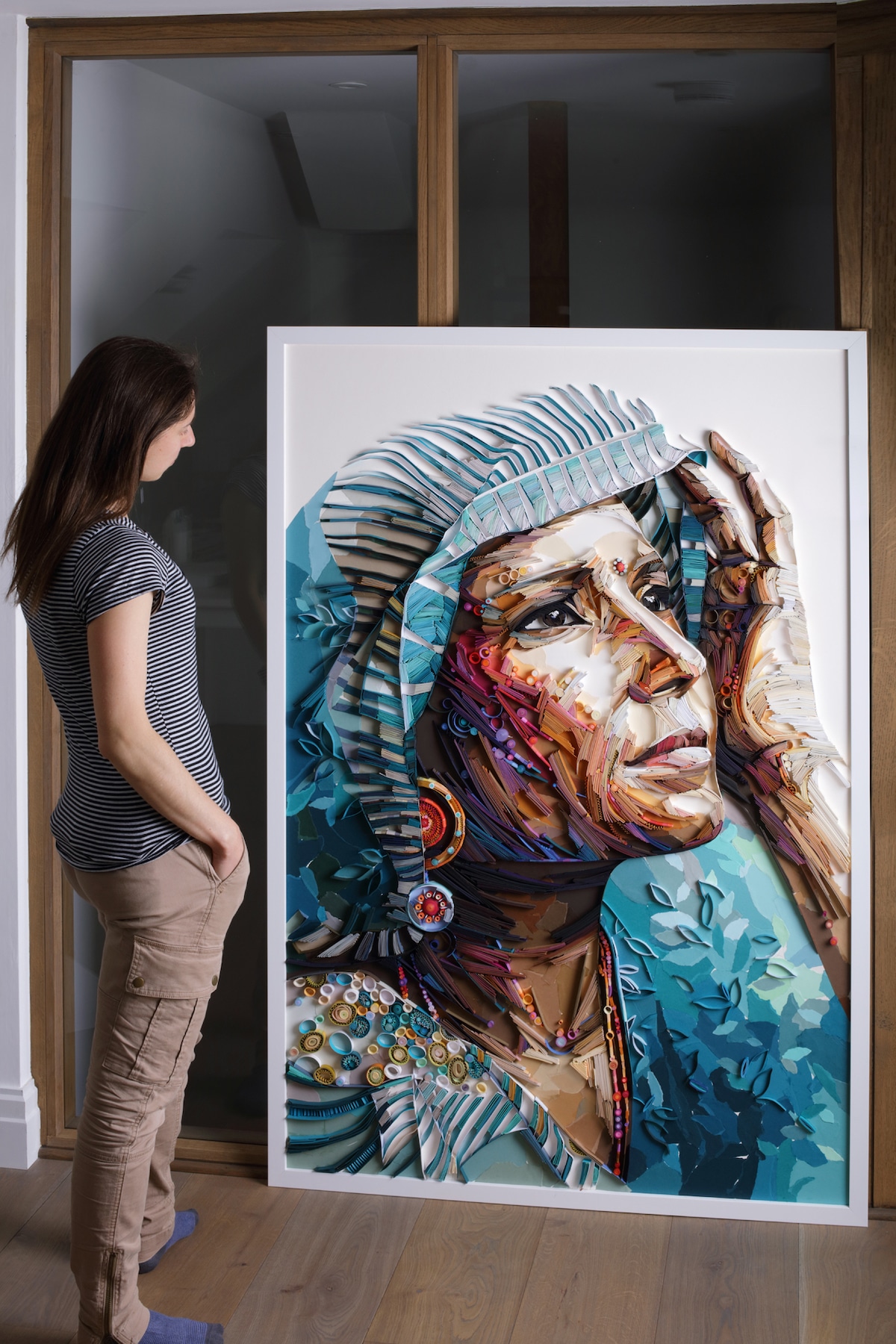
Brodskaya with her piece “Seeing”
This post may contain affiliate links. If you make a purchase, My Modern Met may earn an affiliate commission. Please read our disclosure for more info.
Renowned paper quilling artist Yulia Brodskaya never imagined that her career would lead to where it is today. Originally trained as a commercial artist, her first forays into papercraft were born out of a desire to create self-promotional work to woo potential design clients. But by spelling her first name in strips of paper, she had unknowingly entered the world of this centuries-old craft that traces its origins back to the Renaissance.
Since beginning to experiment with paper, Brodskaya has honed her craft by continually pushing herself to produce new and increasingly complex pieces. This encourages her to improve on her current approaches to quilling while inventing alternative ways to depict things like facial features and decorative motifs. The results showcase her love of interdisciplinary art, and her latest large works straddle the line between paper quilling and Impressionist-style paintings.
Brodskaya has recently written a book about her artistic process called Painting with Paper—Paper on the Edge. You won’t find paper quilling tutorials in it, but it will certainly inspire you to follow your own creative voice. We spoke with Brodskaya more about her book as well as about her art—including some of her most breakthrough pieces. Scroll down for My Modern Met’s exclusive interview.

“Seeing”
When did you first learn paper quilling?
I never really “learned” it because when I first started working with paper strips, I had no idea what quilling was (people told me about the term quilling after my projects started to appear online). I always had a special fascination for paper as a material, but I studied graphic design and illustration and never thought that paper art would become my true passion.
About 10 years ago, I was mainly interested in creating hand-drawn illustrations, especially letterforms, and after working at them for a year or so I had put together a number of typographic designs good enough, in my opinion, to get me editorial commissions from magazines and newspapers.
My idea was to make a little self-promotional booklet featuring some of these designs and send it out to potential clients. The crucial thing that was missing was an eye-catching cover image that would make certain my booklet would be noticed. I decided that it had to be my name illustrated and featured on the cover. I created several hand-drawn versions of my name—Yulia— but none of them seemed to be good enough, so I discarded them.
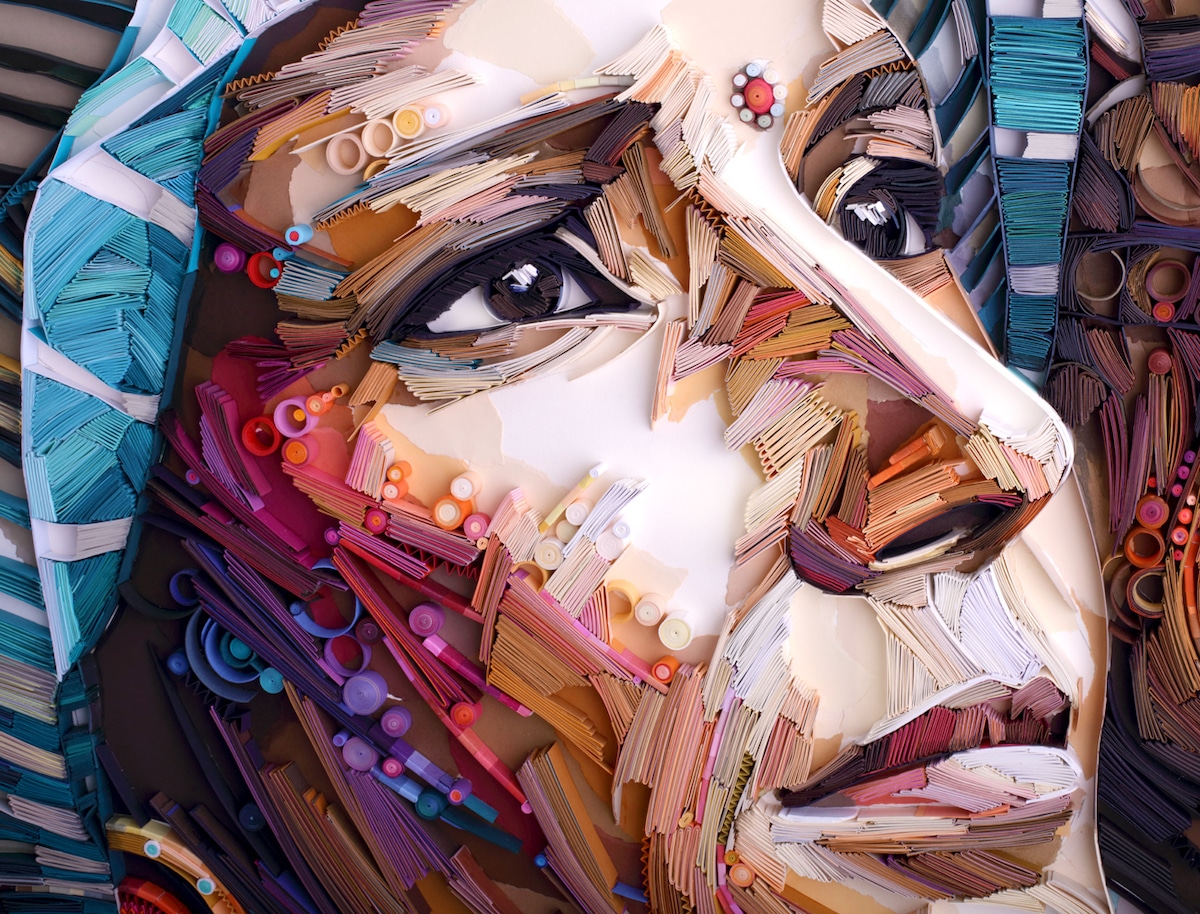
“Seeing” (detail)
(continued) At some point, somehow, the idea to cut a sheet of card into strips came to my mind, and I began gluing these strips’ edges down, repeating the letter outlines. As soon as the “Yulia” paper design was ready, I realized that I’m onto something very exciting, I immediately dropped the illustrative booklet idea and instead immersed myself into this new world of paper.
I, unknowingly, invented quilling from scratch for myself; but it turned out that my method is not really the same: the key difference is that I use heavy paper or card which I shape and manipulate any way I want to as if I’m drawing or painting with paper strips.
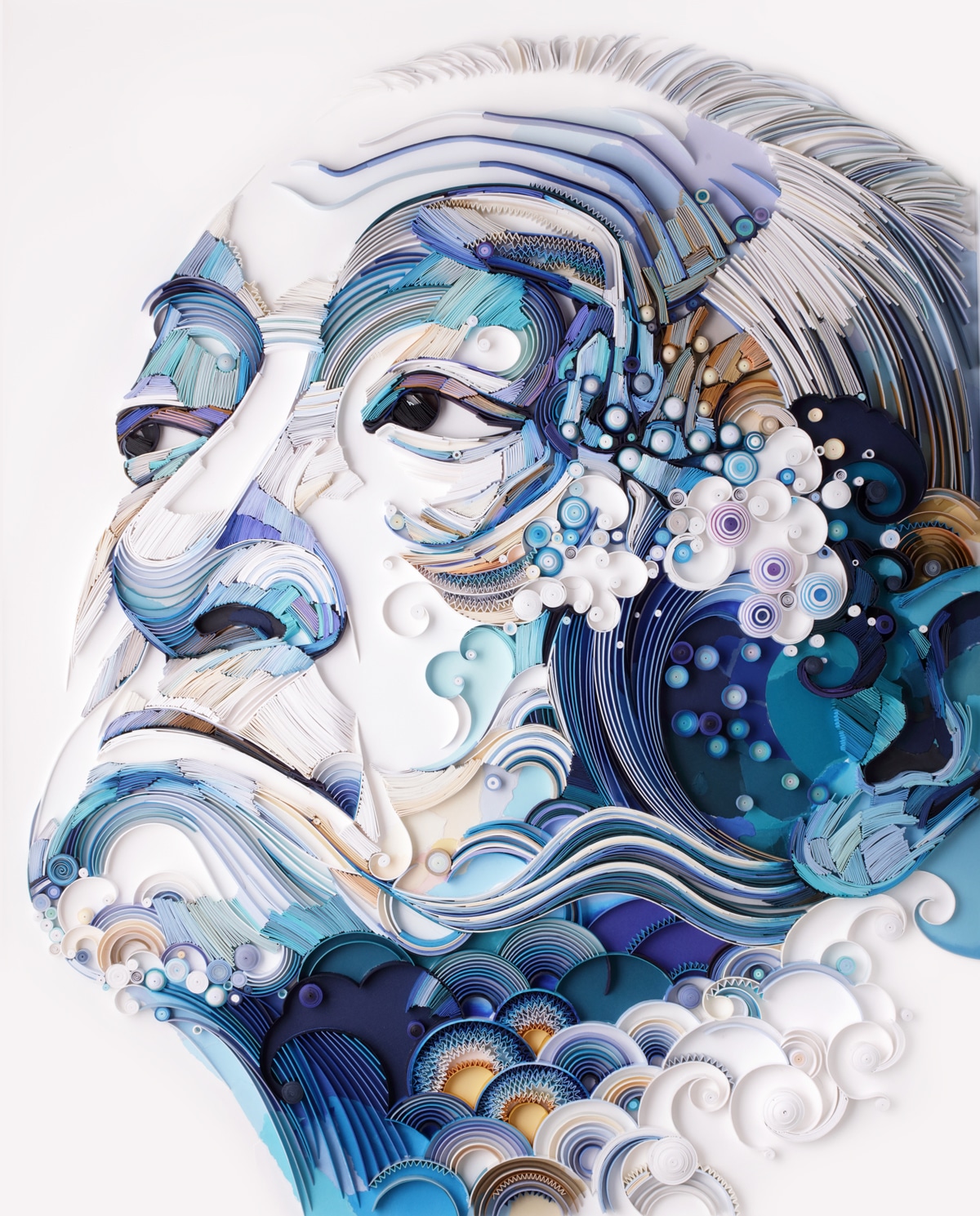
“Samurai Dreams”
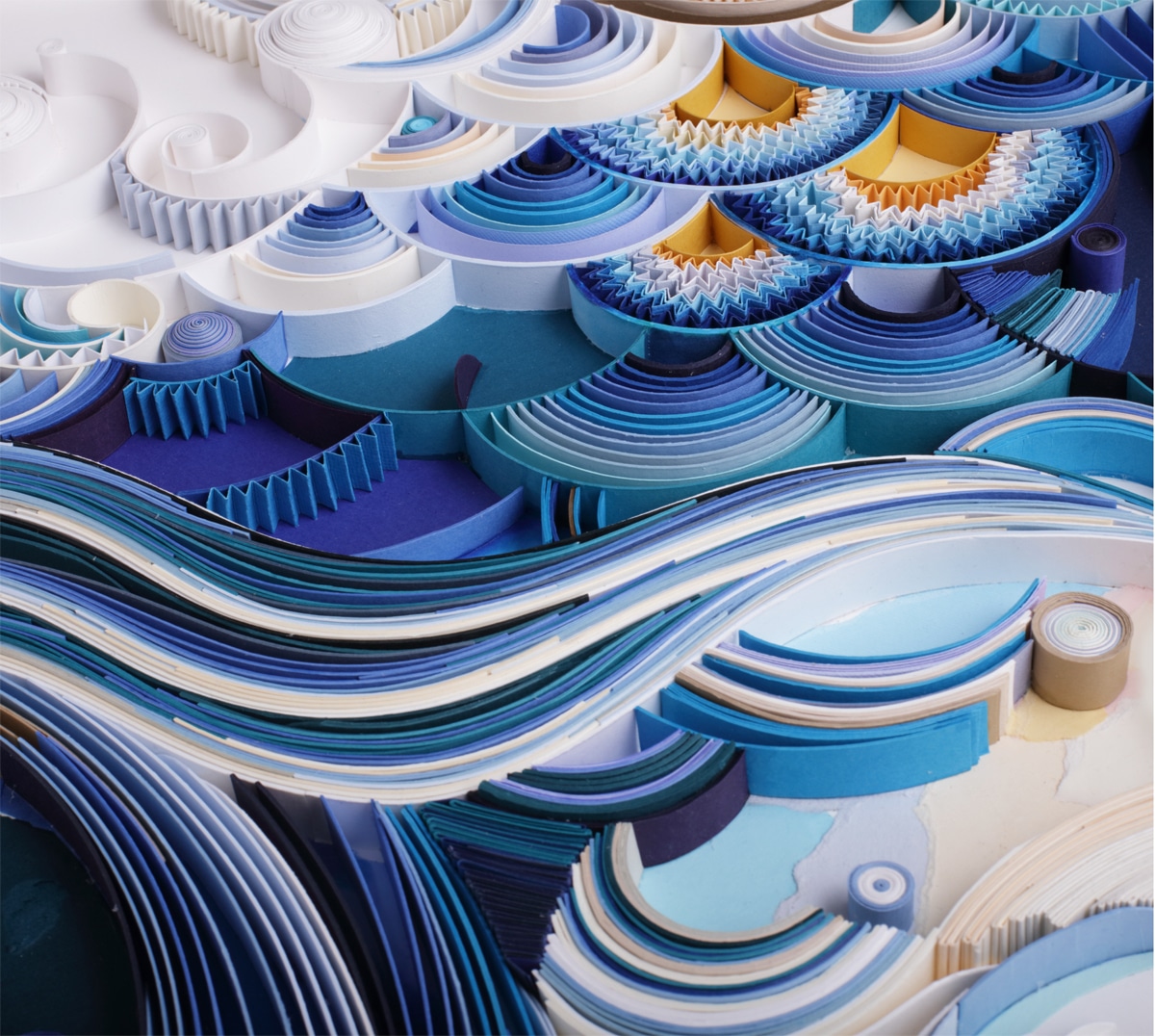
“Samurai Dreams” (detail)
What were your first projects like?
My very first projects were completely different compared to the large-scale portraits that I work on nowadays. I was mainly focusing on typography and making decorative letters with paper strips. This was an essential period though because my commercial work for editorial and advertising projects has brought exposure and popularity to this type of papercraft and made it look modern and exciting. So many people practice quilling these days compared to a small number of dedicated quillers, school kids, or scrapbook making enthusiasts who were familiar with this craft 10 years ago.
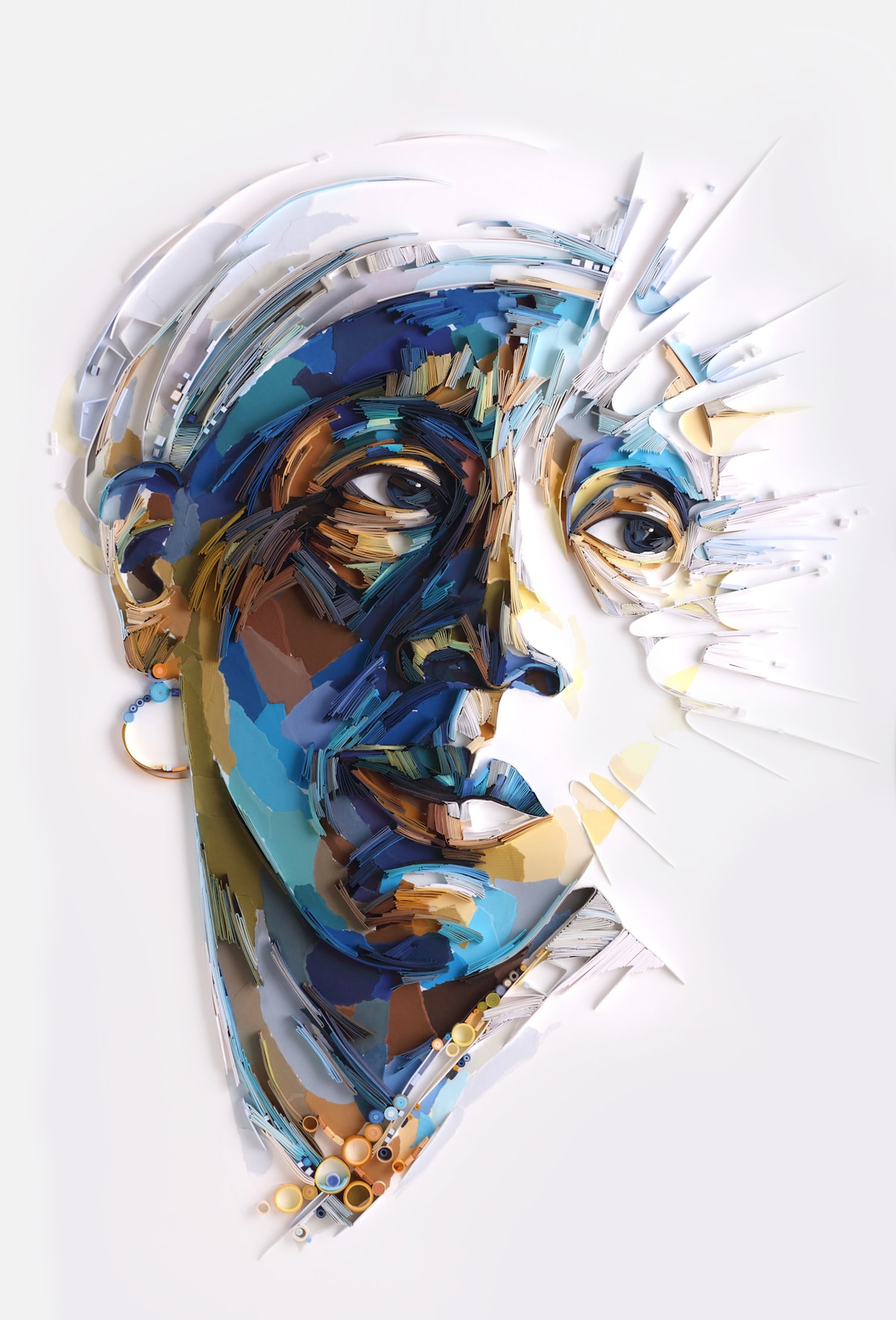
“Pull to the Light”
Paper quilling has been around since the Renaissance, yet you have reinvented the craft time and again. What inspired you to experiment?
My paper art is a reflection of my development as a person, basically, it evolves naturally versus me having some plan and a clear idea of where it’s going; I just follow my instincts/heart/intuition (call it any way you want) and allow these transformations to happen and come through.
How long did it take to develop these new techniques?
In my book, I write about my 10-year journey and explain the evolution that had to take place for me to arrive at this moment when I don’t really feel any medium constraints, I’m just excited to see what’s next: possibilities are endless.

“Sheshall”
Is there a piece you consider a “breakthrough” in your work, in terms of approach or subject matter?
I can name several projects that seem to stand out.
In my early years: A commission for The Guardian newspaper (g2) which was my very first commercial job using paper strips, it was a real breakthrough project bringing me a tone of exposure, basically it “got the ball rolling” for my art, I never had to look for jobs since they kept coming my way.
Later on, there were other projects that played a big part in the development of my methods (having said that, I do believe that every single work played its part), but to name just a few:
- My first paper portrait.
- First time I used a tight pack of bent strips (which eventually led me to the method of “painting” with paper strips that I consider my main contribution to the world of paper art).
The list can go on because I do learn something new with every new artwork completed.
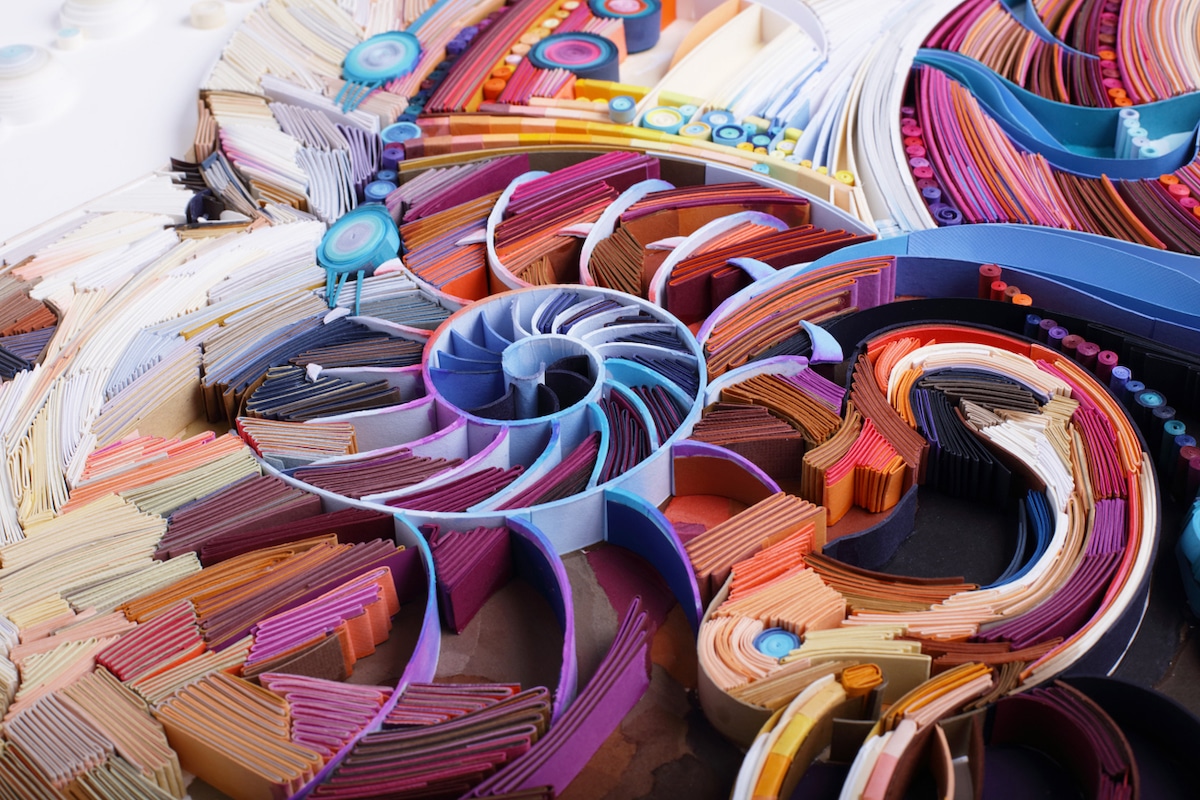
“Sheshall” (detail)
For those that would like to try paper quilling for themselves, what are your top tips for beginners?
I always give the same advice: just give it a try and enjoy the process. You will know that it’s right for you. If you feel joy and pleasure from working with paper strips, at this point the outcome is secondary.
Remember: There is no right or wrong way, and it is NOT about the tools. There are thousands of tutorials for those who need them, but it is important not to get stuck and develop a habit of needing somebody else to outline and plan every creative decision for you. The real unique creativity comes from inside when you find the courage and learn to make your own decisions (and, sometimes, mistakes) but ultimately create the art that is as unique as you are.

What can you tell us about your book Painting with Paper—Paper on the Edge? How did the project come about?
I’ve been approached by multiple publishers offering me to write a book about quilling; however, they were only interested in project-based/tutorial books believing that this is the only format that people would be interested in. I only agreed to give this adventure “a go” when at some stage of discussion everyone involved in the book production agreed to take a leap of faith and allow me to write a book the way I believe it needs to be written to reflect my work.
What can readers expect?
People ask me for tutorials all the time, but I can never bring myself to do them because they don’t represent my creative process. The book is an insight into the way I work, the creative decisions I make every step of the way; there is plenty of practical tips too, but most of all, I hope my journey will inspire people to get in touch with their innate creativity (if you recognize and see beauty, it means that there is already that dimension present in you). The book is not just for those interested in quilling and papercraft, many of the things I write about are inter-disciplinary and might be interesting for anyone who enjoys art in general.
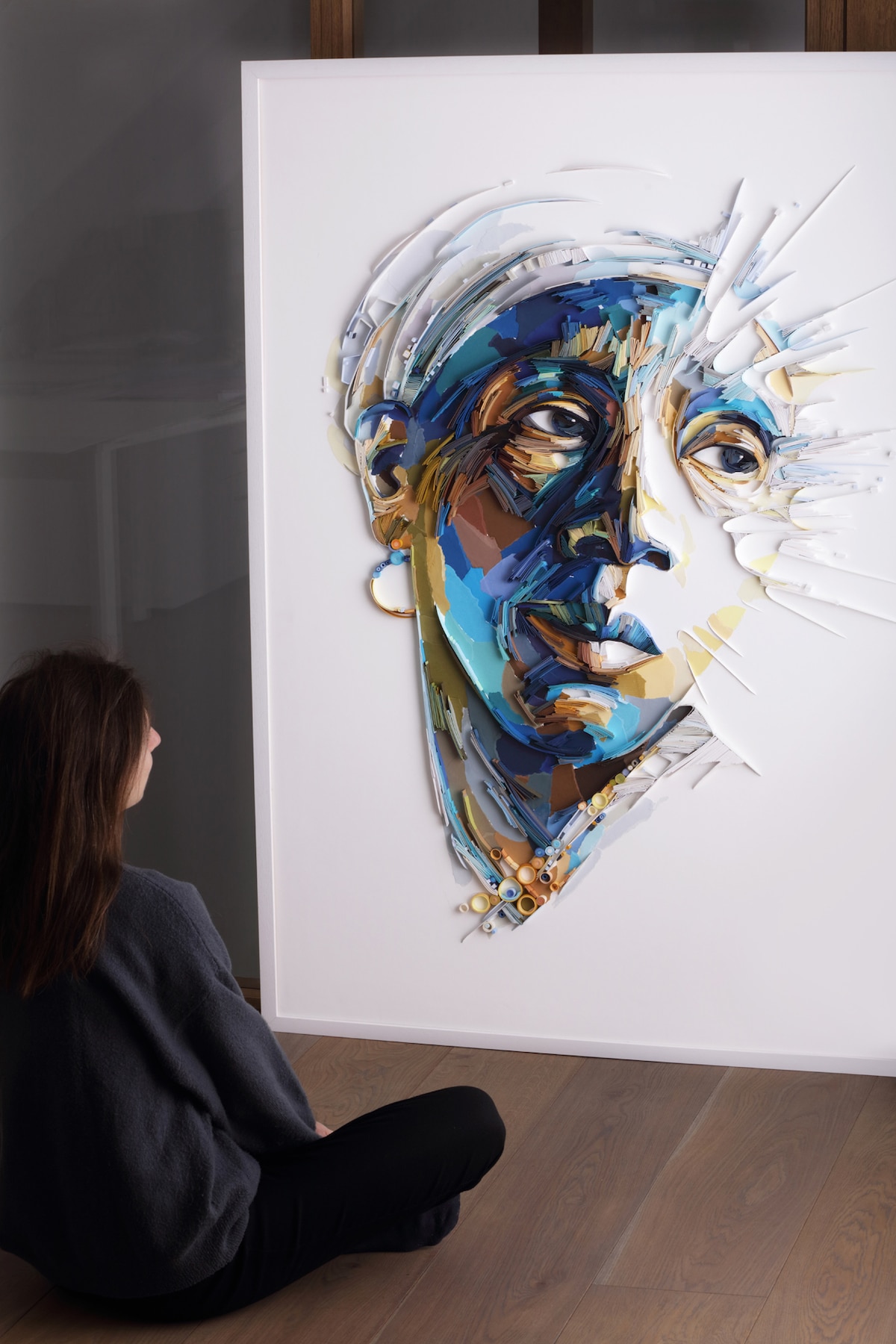
Brodskaya with her piece “Pull to the Light”
What are you working on now? Anything exciting you can tell us about?
Right now, I’m all about exploring large scale (I must say that it is not LARGE universally speaking), but large for the techniques that I use, e.g. my recent works are about 1 by 1.5 meters.
Of course, it is possible to fill in a large space with hundreds of tightly rolled circles or coils; however, my personal interest lies in conveying a deeper emotional complexity into larger paper artworks, ensuring that the larger scale does not become a goal in itself. I also feel a new urge in choosing my subject matter: it feels that depicting just a beautiful flower, a pretty shell or a decorative wave on its own is simply not enough. A human presence is needed to deepen the visual experience, the feel and emotional charge coming from the artwork, so I end up combining the natural motifs with human faces. It is probably just another step in my art evolution, and who knows what I am going to create next. It is all exciting and I’m happy to share my paper art journey with so many people!











































































